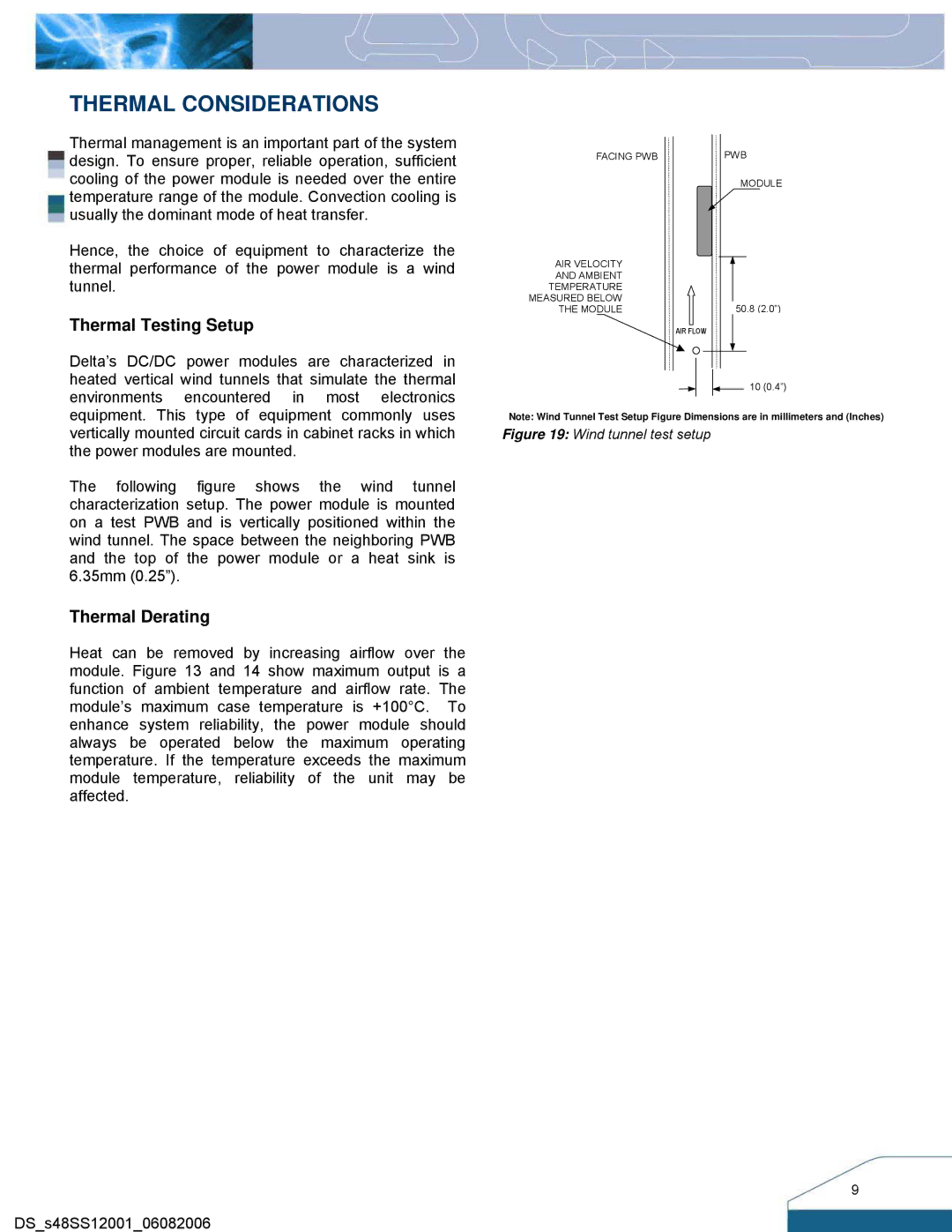
THERMAL CONSIDERATIONS
Thermal management is an important part of the system design. To ensure proper, reliable operation, sufficient cooling of the power module is needed over the entire temperature range of the module. Convection cooling is usually the dominant mode of heat transfer.
Hence, the choice of equipment to characterize the thermal performance of the power module is a wind tunnel.
Thermal Testing Setup
Delta’s DC/DC power modules are characterized in heated vertical wind tunnels that simulate the thermal environments encountered in most electronics
FACING PWB
AIR VELOCITY
AND AMBIENT
TEMPERATURE
MEASURED BELOW
THE MODULE
AIR FLOW
PWB
MODULE
50.8 (2.0”)
10 (0.4”)
equipment. This type of equipment commonly uses vertically mounted circuit cards in cabinet racks in which the power modules are mounted.
The following figure shows the wind tunnel characterization setup. The power module is mounted on a test PWB and is vertically positioned within the wind tunnel. The space between the neighboring PWB and the top of the power module or a heat sink is 6.35mm (0.25”).
Thermal Derating
Heat can be removed by increasing airflow over the module. Figure 13 and 14 show maximum output is a function of ambient temperature and airflow rate. The module’s maximum case temperature is +100°C. To enhance system reliability, the power module should always be operated below the maximum operating temperature. If the temperature exceeds the maximum module temperature, reliability of the unit may be affected.
Note: Wind Tunnel Test Setup Figure Dimensions are in millimeters and (Inches)
Figure 19: Wind tunnel test setup
9
DS_s48SS12001_06082006
